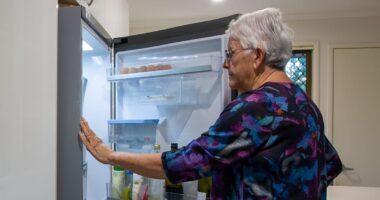The Princess of Wales is currently being treated in hospital after undergoing successful abdominal surgery.
The future Queen was admitted to The London Clinic on Tuesday (January 16) for the planned procedure.
Sources have said Kate is “doing well” following the surgery. She is expected to remain in hospital for 10 to 14 days before going home to continue her recovery.
Overall, she is likely to spend between two and three months recuperating, Kensington Palace said.
This is quite common for abdominal surgery. According to advice by London North West University Healthcare NHS Trust, it can take as long as three to six months to feel “back to normal”.
The NHS trust says: “Having an operation can be a stressful experience, physically and emotionally.
“When you first go home you are likely to feel tired and not yourself for a while. Things will get better.
“Some people report that it takes them three to six months to feel completely back to their normal selves but others recover more quickly.
“It is common to feel a bit low in the first weeks and to become frustrated that you cannot do everything that you would like to do but please be patient.”
The trust warns not to push yourself too far during this recovery period.
“The important thing is to strike a balance – try not to be in too much of a hurry, but do try steadily to increase the amount that you do,” it adds.
“Listen to your body and do only as much as feels comfortable.”
To aid recovery from such a procedure there are exercises patients can try at home.
York and Scarborough Teaching Hospitals NHS Trust recommends four abdominal exercises to help your core stability.
You can start these as soon as you feel comfortable to do so.
The best position to do these exercises is lying on your back on the floor or on a bed, knees bent, feet flat and hip width apart and a pillow behind your head providing neck support.
Try doing them twice a day if you can.
As the muscles get stronger you will find that you can hold for longer and do more repetitions.
“We strongly advise you to avoid exercises like sit ups as they put undue pressure on the abdominal wall,” the trust says.
“Although the wall has been stitched back together with strong sutures it will take a while to regain its original strength; whilst healing it will be weak and prone to a hernia developing.”
Deep abdominals
- Breathe in, gently letting your tummy rise
- As you breathe out, gently draw your tummy button towards your spine
- Hold for a few seconds, then relax
- Rest for a few seconds.
Pelvic tilting
- As you breathe out and draw your tummy in, gently tilt your pelvis and flatten the small of your back into the bed
- Hold for a few seconds, and then relax.
Knee rolling
- Draw and hold your tummy in
- Slowly lower your knees to one side, making sure that your shoulders remain on the floor
- Return to the starting position
- Lower your knees to the other side making sure that your shoulders remain on the floor
- Keep breathing normally.
Pelvic floor exercises
- Squeeze the muscles at the back passage as if trying to stop wind, then squeeze forwards and up as if trying to stop the passage of urine
- Aim to achieve your maximum squeeze and hold the squeeze for 10 seconds
- Do not hold your breath.
The trust adds: “After major abdominal surgery with a large incision it takes about two to three months to be able to move around comfortably.
“If you have had complex keyhole surgery your recovery will be quicker.”










